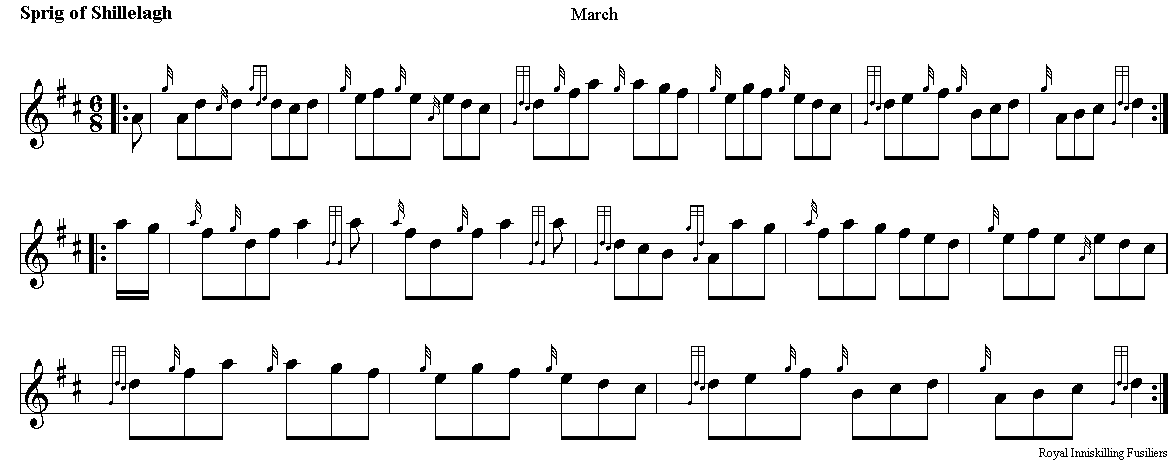|
Shillelagh is a very small village located in the heart of the
Wicklow Mountains. This village was, until the 19th century,
reputed for its great oak forest, one of the most famous of
Europe. The head of those trees served to feed a nearby forge,
the shillelagh forge, and the rest was exported everywhere
notably to construct the roof of the Westminster abbey in
London, several boats of the British navy in the 16th century
and some buildings of Trinity college in Dublin. Today this
forest has nearly disappeared, replaced by fields, and only a
handful of centuries old oak trees still grow.
A
club cut from an oak was known as a
sprig of shillelagh.
One of the hypotheses on the birth of the shillelagh comes
directly from the prehistory of Ireland1. The island was
occupied before the arrival of the Celts around 500 B.C. (a date
which is subject to debate), as early as 8000 B.C. The people
living in those times were much smaller than those who succeeded
them, as proven by several artifacts from the Bronze Age.
Following the arrival of the Celts, they were driven to the
center of the island. Many of their chiefs decided to follow the
ways of the Celts, but some, united by the chief Ealach, refused
and isolated themselves. They were known as Siol Eolaigh or
followers of Ealach, a term which might have been the source of
the word Shillelagh, as these people were often associated with
the blackthorn sticks, which they would have used without
removing the spikes. Their ability to disappear across the mazes
created by the bushes of this plant, created myths around them
and were soon nicknamed Leprechauns by the Norman occupants.
They also had a reputation of being good shoe-makers and potters
and so people would often leave their broken pots and shoes by
their doors so they could be repaired by the small peoples.
Their association with the blackthorn sticks also produced a
lasting tradition. It was a belief that hanging a blackthorn
branch outside your house would act as a lucky charm.
This may be explained by the fact that the Leprechauns
considered it as a weapon and lacking a sense of property like
some Amerindian tribes, they would often steal objects. So
people would hang blackthorn branches outside their house to
indicate that the owner was armed with a shillelagh and
knew how to use it.
The stick is one of, if not the oldest weapon of mankind. It was
used by all layers of society and can be found on Egyptian
hieroglyphs, on Greco-Roman representations of Hercules and on
the notorious tapestry of Bayeux, in the hands of William the
conqueror himself. And as weíve seen, the use of the blackthorn
stick could go back to the foundations of Irelandís history. But
it isnít before the 14th century that the term shillelagh
is used as we know it today. It would actually come from Richard
II king of England from 1377 to 1400 AD. In 1399, Richard would
mount an expedition against the rebellious Irishmen of Leinster.
Richard pursued across the plains of Imal and Glenmalure the
chief Art Mor McMurrough and his ally Domichadh Mac Brain Ruaidh
O'Byrne. But rapidly the situation reversed, the Irish, much
more familiar with the terrain and more mobile would make their
enemies suffer a living hell. Richard would complain about the
use of the sticks of Shillelagh against his men. Like guerrilla
warfare, the Irish would attack and retreat quickly into the
woods. The English survivors, strained and starving would rejoin
the coast where supplies were waiting for them. This trip would
be fatal for Richard II; his cousin Henry taking the opportunity
of his absence and defeats to take power and have him imprisoned
and assassinated on his return to England.
 |



